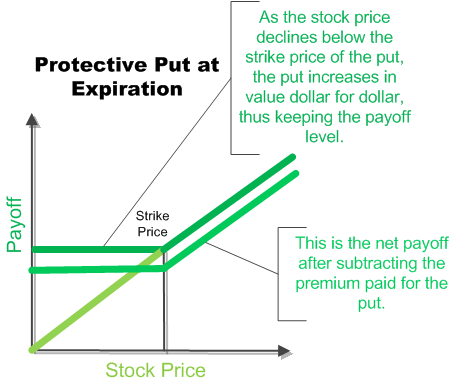Contents
Correlation is a process to establish a relationship between two variables. In statistics under relation and functions, methods of correlation summarize the relationship between two variables in a single unitless number called the correlation coefficient. Linear correlation is a correlation when the graph of the correlated data is a straight line. The linear correlation can be either positive https://1investing.in/ or negative when the graph of straight line is either upward or downward in direction. On the other hand the non-linear or curvy-linear correlation is a correlation when the graph of the variables gives a curve of any direction. Like perfect correlation, non-linear correlation can be either be positive or negative in nature depending upon the upward and downward direction of the curve.

The most common correlation coefficient, generated by the Pearson product-second correlation, could also be used to measure the linear relationship between two variables. Correlation coefficients are used in the statistics for measuring how strong a relationship exists between two variables. There are many types of correlation coefficient like Pearson’s correlation that are used in linear regression analysis. Scatter plot is a simple graph where the data of two continuous variables are plotted against each other.
A value of zero indicates that there is no relationship between the two variables. It is a measure of how closely two random meaning and types of correlation variables change at the same time. CorrelationCovarianceIt is a measure of how closely two random variables are connected.
What are the 5 types of correlation?
Other charts use lines or bars to show data, while a scatter diagram uses dots. This may be confusing, but it is often easier to understand than lines and bars. A presentation of this end result for population distributions is given by Cox & Hinkley. A correlation is a statistical measurement of the relationship between two variables.
- The survey was done among 12 people and all these people were aged above 30 years or more.
- This measures the power and course of the linear relationship between two variables.
- Between two data sets, the correlation and its types are positive correlation, negative correlation, or no correlation.
- The product-moment correlation and simple correlation coefficient are other names for Karl Pearson’s coefficient of correlation.
- A positive correlation occurs when the values of two variables move in the same direction.
This would mean that the 2 variables have little or no relationship to 1 one other, and that result’s most probably NOT a chance prevalence. On the opposite hand, a correlation coefficient of zero.ninety five won’t be statistically significant. So, do NOTassume that enormous coeffients are mechanically statistically significant or that small coefficients are not.
Spearman Correlation
A relationship between two variables, x and y, in which the change in value of one variable is exactly proportional to the change in value of the other. See Campbell & Machin appendix A12 for calculations and more discussion of this. This measures the energy and path of a linear relationship between two variables. How many coefficients truly turned out to be statistically vital?
He can use one-way ANOVA to compare the average score of each group. However, he won’t be able to identify the student who could not understand the topic. The ANOVA test is generally done in three ways depending on the number of Independent Variables included in the test. Sometimes the test includes one IV, sometimes it has two IVs, and sometimes the test may include multiple IVs. In the ANOVA test, we use Null Hypothesis and Alternate Hypothesis .
Regression is an equation that checks how a change in one variable will result in a change in another variable. Regression can be defined as a measurement that is used to quantify how the change in one variable will affect another variable. Regression is used to find the cause and effect between two variables.
Variance and Coefficient of Variance
Yield of paddy and the use of fertilizers is an example of simple correlation as yield of paddy depends on the use of fertilizers i.e. presence of one variable affects another variable. To check the cause and effect relationships between the pair of continuous variables. Suppose in a manufacturing firm, they want to know the relation between production volume & the efficiency of machinery equipment. When the price of mango increases, the demand for mango decreases. Correlation is a statistical tool used to establish the relationship between two or more variables.
Each of these techniques provides a way of developing a prediction mannequin primarily based on correlation coefficients computed from a set of variables. The coefficients themselves are computed using the bivariate techniques listed in Table 12.three in your textual content. This interpretation of the correlation coefficient is maybe best illustrated with an example involving numbers. In regression the curiosity is directional, one variable is predicted and the other is the predictor; in correlation the interest is non-directional, the relationship is the important facet.

However, more than one or two is usually not recommended because the more control variables, the less reliable our test. Top quant trade strategies for the week aheadThis pair has 92 per cent correlation over the last one year. Top quant trade ideas for the week aheadThis pair has 96 per cent correlation over the last one year.
Correlation is a statistical measure that expresses the extent to which two variables are linearly related . It’s a common tool for describing simple relationships between data sets. When two sets of data show high fidelity to change with respect to one another we say they have a high correlation. We use the correlation coefficient, r to quantify the magnitude of the relationship.
Correlation coefficient is independent of the change of origin and scale. Coefficients of correlation measure only linear correlation between X and Y. The coefficient of correlation cannot take value less than -1 or more than one +1.
What are types of correlation?
The data points of the variables are plotted on the graph to check the correlation and the best-fitted line represents the regression equation. To calculate the Pearson product-moment correlation, one must first determine the covariance of the two variables in question. The correlation coefficient is determined by dividing the covariance by the product of the two variables’ standard deviations.
Regression coefficient is independent change of origin but not scale. If the value of one variable is known then the value of the other variable can be estimated using functional relationships. To examine whether there is a relationship exists between the variables. It means that on the average, if fathers are tall then sons will probably tall and if fathers are short, probably sons may be short. In some instances, the variables cannot be measured meaningfully.
For e.g.If we study the effect of rain, soil, temperature on potato production per acre. Or e.g.If we study the effect of rain, soil, temperature on potato production but consider only the effect of rain and temperature. The difference between Correlation and Covariance is listed below. The above formula is used to find correlation using Spearman Correlation. For example, we might want to see if there is a correlation between the amount of food eaten and blood pressure, while controlling for weight or amount of exercise. For example, a researcher is interested in computing the correlation between crime rates in a region and multiple factors like unemployment, illiteracy, substance abuse, inflation etc.
He interpretation of co-efficient of correlation is based on the degree of correlation. Orrelation means that between two series or groups of data there exist some casual connection. If two series vary in such a way, that Fluctuation in one variable is accompanied by the fluctuation in other variable, these variables are said to be correlated. If r is negative it means that as one gets larger, the opposite will get smaller (usually referred to as an “inverse” correlation). The Survey System’s elective Statistics Module consists of the most typical kind, referred to as the Pearson or product-moment correlation.
